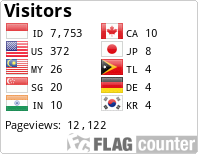EFEKTIVITAS SERBUK DAUN PANDAN WANGI (Pandanus amaryllifolius Roxb) TERHADAP KEMATIAN LARVA Aedes aegypti
DOI:
https://doi.org/10.46356/jakk.v4i1.167Keywords:
Larvacides, Pandanus amaryllifolius Roxb, Aedes aegyptiAbstract
ABSTRAK
Demam berdarah dengue (DBD) adalah penyakit infeksi yang di sebabkan oleh satu dari 4 virus dengue berbeda
dan ditularkan melalui nyamuk terutama Aedes aegypti dan Aedes albopictus. Penggunaan serbuk daun pandan
wangi (Pandanus amaryllifolius Roxb) mengandung insektisida botanik (alami) karena mengandung alkaloida,
saponin, flavonoid, dan minyak atsiri. Kandungan kandungan daun serbuk daun pandan wangi dapat menghambat
bahkan membunuh larva nyamuk. Jenis penelitian yang digunakan adalah eksperimen dengan menggunakan
analisis regresi linear. Populasi dalam penelitian ini adalah daun pandan wangi (Pandanus amryllifolius Roxb),
sampel dalam penelitian ini adalah serbuk daun pandan wangi (Pandanus amryllifolius Roxb). Hasil penelitian ini
diperoleh rata-rata persentase kematian larva Aedes aegypti dengan menggunakan bahan uji yaitu serbuk daun
pandan wangi (Pandanus amaryllifolius Roxb) dengan konsentrasi 100 mg/mL yaitu 9,2%, 200 mg/mL yaitu
10,7%, 300 mg/mL yaitu 12%, dan 400 mg/mL yaitu 18,7%.
Kata Kunci : Larvasida, Pandanus amaryllifolius Roxb, Aedes aegypti
ABSTRACT
Dengue hemorrhagic fever (DHF) is an infectious disease caused by one of four different dengue viruses and is
transmitted through mosquitoes, especially Aedes aegypti and Aedes albopictus. The use of fragrant pandan leaf
powder (Pandanus amaryllifolius Roxb) contains botanical insecticides (natural) because they contain alkaloids,
saponins, flavonoids, and essential oils. The content of leaves of fragrant pandan leaf powder can inhibit even kill
mosquito larvae. The type of research used experiments using linear regression analysis. The population in this
study was fragrant pandan leaves (Pandanus amryllifolius Roxb), the sample in this study was powdered fragrant
pandan leaves (Pandanus amryllifolius Roxb). The results of this study obtained an average percentage of
mortality of Aedes aegypti larvae by using the test material namely fragrant pandan leaf powder (Pandanus
amaryllifolius Roxb) with a concentration of 100 mg/mL which is 9,2%, a concentration of 200 mg/mL which is
10,7%, a concentration of 300 mg/mL that is 12%, 400 mg/mL which is 18,7%.
Keywords : Larvacides, Pandanus amaryllifolius Roxb, Aedes aegypti
Downloads
Published
Issue
Section
License
Authors who publish on JAKK can share their research in a number of ways. JAKK does not impose an embargo on published journals, meaning that researchers can access it openly after the article is published. Researchers who have subscribed to access to articles can also share.
JAKK already uses the Open Journal System (OJS) thereby enabling the final version of all published research articles to be placed in any digital archive immediately after publication. JAKK can automatically make feeds of open access articles available to any repository that wishes to receive them.
Authors who publish with this journal agree to the following terms:
* Authors retain copyright and grant the journal right of first publication, with licensed under a Creative Commons Attribution ShareAlike 4.0 International License (CC BY-SA 4.0) that allows others to share the work with an acknowledgement of the work's authorship and initial publication in this journal.
* Authors are able to enter into separate, additional contractual arrangements for the non-exclusive distribution of the journal's published version of the work (e.g., post it to an institutional repository or publish it in a book), with an acknowledgement of its initial publication in this journal.
* Authors are permitted and encouraged to post their work online (e.g., in institutional repositories or on their website) prior to and during the submission process, as it can lead to productive exchanges, as well as earlier and greater citation of published work.







2.jpg)

